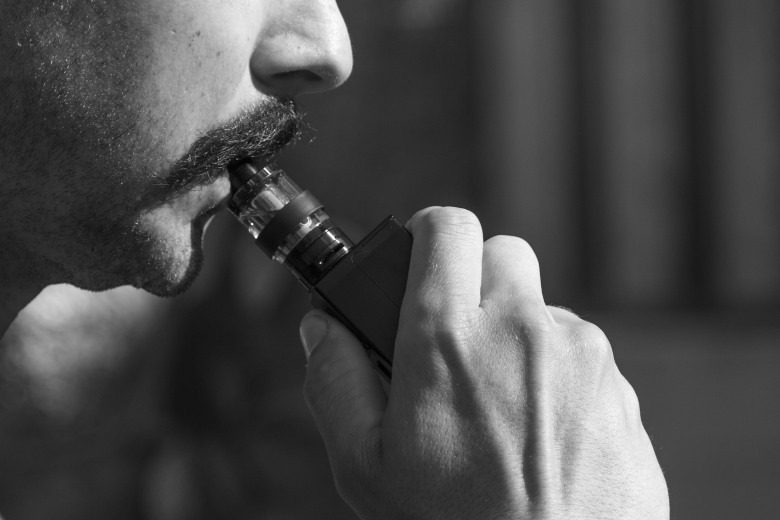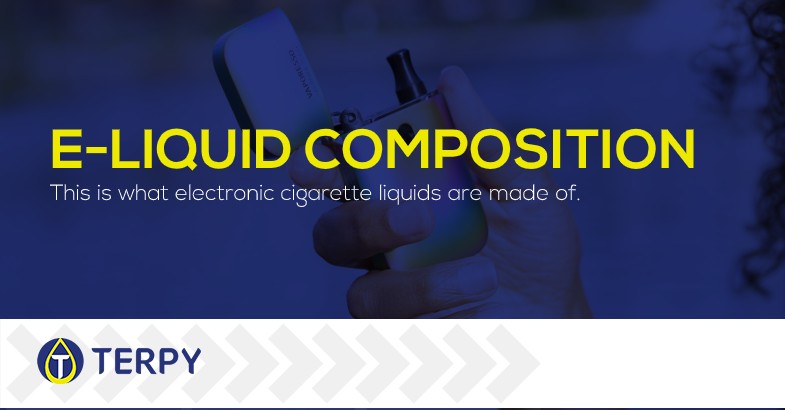Modified on: 29/05/2024
This is what electronic cigarette liquids are made of.
If you are considering the use of an electronic cigarette to replace your regular cigarette, you are probably also asking yourself many questions. Initially, people are often sceptical, and full of doubts and uncertainties. Obviously this is normal.
Let us start by explaining what an electronic cigarette is, how it works and what it is used for. In short, it is a device that vaporizes, through an atomizer, a specially designed e liquid containing nicotine, which serves to decrease the dependence on cigarettes, pipes and cigars.
But what is the e cigarette liquid made of?
An electronic cigarette’s liquid is mainly composed of the following substances:
- Propylene glycol (PG)
- Vegetable glycerol or vegetable glycerine (VG)
- E liquid concentrates
- Liquid nicotine (optional)
How are the ingredients mixed and what is their function?


The main components present in all e liquid for electronic cigarettes are: vegetable glycerol and propylene glycol. The first is a particularly viscous and dense vegetable additive that confers smokiness to a liquid (ie. The amount of steam generated during vaporization). This smoke also depends on the atomizer used.
The second is an odourless and colourless liquid chemical compound with a sweet taste. It is mainly used by the food, pharmaceutical and cosmetic industries to dilute other components. In the case of electronic cigarettes, it is a carrier for the aroma and nicotine. It is edible and harmless.
Propylene glycol (PG) and vegetable glycerol (VG) together form the “base liquid ecig”. VG and PG are water soluble and can be mixed together in different amounts. A liquid composed of half vegetable glycerol and half propylene glycol has less strong vaporization quality compared to a liquid that has a higher percentage of vegetable glycerol.
Added to the liquid next is: e liquid concentrates (100% PG), liquid nicotine and, in some cases, demineralized water.
The e liquid flavour concentrates that is used is usually of a food type. It is added to give flavour to the liquid, which otherwise would only have a sweet-tasting note. Entry level liquids are made of various marked flavours and range from the classic tobacco taste, to creamy, fruity, menthol and many others.
Nicotine can be present in e cigarette liquids in various concentrations and its function is to satisfy the smoker’s need for nicotine. For avid smokers it is never advisable to choose a liquid without or with a low amount of nicotine. If the amount of nicotine to which the body is accustomed is not satisfied, it is possible to experience withdrawal symptoms.
Finally, the demineralized water (or deionized water) is a water from which the saline component is extracted. If is therefore less hard and is used to avoid crystallization.
Read also: Ganja flavours for electronic cigarettes: can it really be consumed legally in the UK?
Fluid Inhalation Legislation


The purpose of the legislation is to protect the health of consumers and to monitor the products that are placed on the market. According to the legislation, e cig liquid with nicotine can be sold with a maximum concentration of 20mg/ml in 10ml bottles and must be notified by a specific authority, accompanied by chemical and toxicological tests.
As for liquids without nicotine, these can be sold in any format and do not have the obligation to attain TPD notification.
In Italy, the whole sector of liquid inhalation with or without nicotine is subject to control by the Customs and Monopolies Agency (ADM or AAMS), which checks the supply chain and distribution. In addition, online sales are allowed only to parties authorized with Fiscal Deposit (FD) and sales at physical points ae subject to authorization by the Customs and Monopolies Agency.
Read also: Electronic cigarette flavour ranking 2020: we have a winner!
Are electronic cigarettes painful?
The electronic cigarette is a relatively new tool which still needs extensive study. What we can say is that its operation is completely different from the combustion of normal cigarettes and causes 95% less carcinogenic damage (studies conducted by the United Kingdom Health Service).
This is because the e cig liquid is vaporized by bringing it to a boil, whereas in normal cigarettes the tobacco is combusted. In cigarette smoke, which is only obtained at a very high temperature, more than 4000 highly carcinogenic components are released which today are recognized as the main cause of diseases of the respiratory tract.
In electronic cigarettes, with the main mechanism being vaporization (which occurs at much lower temperatures than combustion), there are no dangers even if formaldehyde and acetaldehyde are released in modest quantities.
In conclusion, according to current studies, the electronic cigarette would seem less harmful than a normal cigarette and an excellent tool to those who wish to stop smoking.





